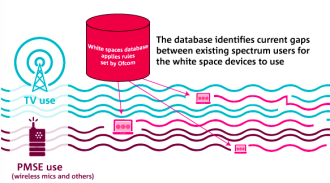 A technology that makes use of gaps in radio and TV frequencies has been approved by regulator Ofcom.
A technology that makes use of gaps in radio and TV frequencies has been approved by regulator Ofcom.
Academics from Strathclude University tested the technique by producing a prototype system in Glasgow which Ofcom has approved.
Ofcom believes that the technique will allow internet access for ships and boats, machine to machine networks and other wide ranging applications. The white space technology can pass more easily through walls and has a greater range than wi-fi.
Ofcom will guide the industry on how to use the white spaces in the frequencies without affecting other channels.
It said it was likely that commercial applications of the technology will be available by the end of this year.
The wireless technology is also expected to be useful when products and services based on the internet of things finally kicks off.
A number of organisations and companies are already experimenting with the technology.









